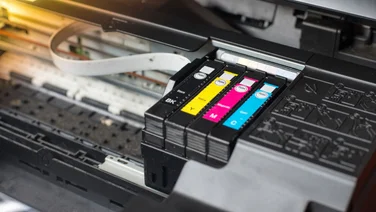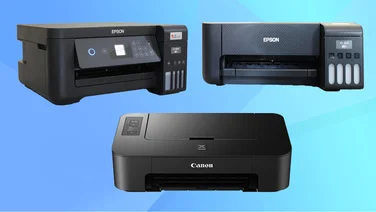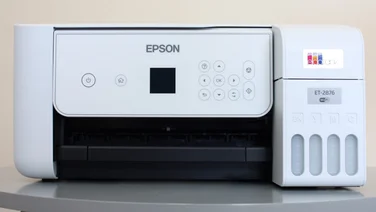To help us provide you with free impartial advice, we may earn a commission if you buy through links on our site. Learn more










Sony’s recent A33 and A55 cameras are packed with innovative features, not least of which being their translucent mirrors and electronic viewfinders. As such, they’re not technically SLR cameras, even though they’re designed to compete in that arena.
The A580 reviewed here bears many similarities with both, but it’s a true SLR with a flip-up mirror and optical viewfinder. Considering that we found the A55’s translucent mirror technology to be somewhat flawed, the prospect of Sony’s other recent innovations in a more conventional package shows a lot of promise.

The A580 is a much bulkier camera, weighing in at 809g with its 18-55mm kit lens. Its detailed 3in screen articulates up and down, although it doesn’t flip right around for self-portraits. There’s a reasonable number of single-function buttons covering ISO speed, drive mode, dynamic-range processing and exposure compensation and lock. The navigation pad is dedicated to controlling the autofocus point when not browsing menus.

A big problem for most SLRs is that live view disables their phase-detect autofocus systems. Instead, autofocus is via the contrast-detect technique used by compact cameras, but this is often extremely slow and cumbersome on an SLR. Sony’s solution in the A580 isn’t as groundbreaking as in the A55, but it’s just as effective. There are two imaging sensors – one for capturing 16-megapixel photos and another just for live view. The latter’s position inside the camera means it doesn’t interfere with the 15-point phase-detect autofocus system, which continued to work just as effectively as when using the optical viewfinder. The live view sensor is more cropped than the captured image and looks noisy in low light, but these are limitations we’d happily live with. It’s also possible to switch to live view from the main sensor and apply a digital magnify function when fine-tuning manual focus.
We’ve seen the same technique used in the A550, but this time around there’s a snag. The A580 is the first Sony DSLR to record video, but to do so it must switch to its main imaging sensor. That means – unlike on the A55 – there’s no autofocus while recording. We’ll not hold it against Sony that it doesn’t attempt contrast-detect autofocus while recording, as rival cameras from Canon and Nikon make such a hash of it that it’s not worth using.
The A580’s video mode shares various other traits with the A55. Picture quality was superb, with 1080p capture in AVCHD format delivering low noise, sharp details and none of the anti-aliasing issues we’ve seen from Canon and Nikon’s SLRs. Sound quality from the built-in stereo microphone was a little noisy but much less tinny than from the A55. There’s also a minijack input for an external microphone.
Disappointingly, the A580 shares the A55’s habit of overheating while recording video. Clips lasted for around 13 minutes at room temperature before the camera switched itself off. Depending on how long we allowed it to cool down for, subsequent clips lasted for between two and 10 minutes. Disabling the sensor-based optical stabilisation improved matters but didn’t eliminate the problem, and it’s easy to forget to do this before commencing recording.
This reduces the video mode to sideshow status, but the A580 has plenty to offer as a stills camera. Continuous performance was excellent, living up to the claimed 7fps speed and lasting for 41 JPEGs or 19 RAW frames. Continuous mode with updating autofocus was at 5fps, although it slowed as the focus was adjusted. The camera wasn’t so responsive in normal use. Photos took over a second to appear on screen after capture, and enabling both live view and image review (to show photos directly after capture) slowed the shot-to-shot time to 1.3 seconds. It was a little lacklustre for an SLR at the best of times, taking 0.7 seconds between shots.

The A580 offers the same range of photographic options and features as the A55, including some extremely impressive multi-exposure modes. Auto HDR captures three varying exposures in quick succession and automatically aligns and processes them to produce a high dynamic range (HDR) image, preserving highlights and shadows in high-contrast scenes. A Multi-Frame NR mode captures six exposures, aligns and combines them to reduce noise. Only one exposure is used in moving areas of the frame to avoid ghosting, and it was highly effective in extremely low-light. Sweep panorama mode captures multiple frames as the user slowly rotates the camera, and stitches them together automatically. It’s even possible to capture a 3D panoramic image using this technique.
While the A55’s translucent mirror compromises its light-gathering abilities, pushing up noise, the more conventional A580 has no such problems. Noise in RAW images was almost a stop cleaner (with ISO 6400 shots being equivalent to the A55 and ISO 3200, for example) and up there with the best – narrowly beating the Canon EOS 550D and just behind the Nikon D3100. Noise reduction at high ISO speeds was applied to JPEGs in spades, though, suppressing too much fine detail for our liking, even after we set Noise Reduction to Weak. Detail levels were excellent at lower ISO speeds, but the kit lens suffered from barrel distortion at wide-angle settings. We’ve seen examples of this kit lens with less impressive focus into the corners of frames.
Automatic exposures were mostly well judged but the lack of options to customise the behaviour of the Auto ISO mode is frustrating – especially as it’s limited to a conservative 100-1600 range. We also found that shooting using live view produced photos that were up to a stop darker than when using the viewfinder. It wasn’t consistent, though, so we couldn’t always remedy the issue simply by dialling in some exposure compensation.
Despite these niggles, the A580 is an impressive camera with its low noise, fast continuous performance and array of genuinely useful tricks. We prefer its more conventional design over the A55, but the Canon EOS 550D is better for video and its automatic exposures are more balanced. Ultimately, though, both cameras are eclipsed by the cheaper Nikon D3100 and Pentax K-r.





